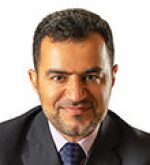In recent years, many companies in the oil and gas industry have been making steady progress employing digital oilfield (DOF) solutions to improve operations through better data capture, visualization, analysis, and automation. As more implementations provide value to particular fields or assets, a question remains of how they can be leveraged as a whole to provide aggregate value at the business portfolio or corporate strategy levels. The large volume and detail of information that DOFs generate, not only in terms of data, but also decision outcomes, interpretations, and knowledge, both tacit and implicit, contribute significantly to a company’s intellectual capital.
Looking at the business case, asset-level business drivers are normally defined by considering short-term benefits in light of immediate challenges. Because of the varied production environments and diverse approaches associated with DOF implementations, determining return on investment and value for an organization’s overall production business is difficult at best; it is analogous to an “apples vs. oranges” comparison of assets. For companies actively pursuing multiple DOF programs, managing commercial uncertainties is, therefore, a key challenge for allocating resources, defining a coherent vision, and ultimately determining the appropriate level of commitment, financial or otherwise.
Applying this perspective, there is a clear opportunity, and corresponding challenge, to scale the DOF value proposition by smoothly integrating independent digital assets into a cohesive system by delivering a smarter, more comprehensive view of a company’s business portfolio. Toward this end, several key concepts and issues should be considered carefully in order to understand the implications of each implementation as the first step toward corporate value realization.
Strategic Business Intelligence
DOF solutions leverage real-time asset awareness, in combination with intelligent analytical tools and collaborative business processes, to continuously optimize production. Data is gathered and manipulated to create information, which in turn develops into knowledge for decision support. Knowledge is the critical piece and having the ability to exploit it to the benefit of the organization should be fundamental. This is the essence of business intelligence and is at the core of the DOF value proposition.
The value of business intelligence, however, is difficult to quantify. It is often lumped with other intangibles in valuation approaches, or there is often an inability to distinguish among the effects of different knowledge assets. Regardless of the reason, the challenge remains—and most often, it is addressed at the organizational level where the DOF implementation occurs—with a given field or asset. Examining that level, it is easier to correlate DOF with an increase in production, increase in efficiency, or knowledge capture for a particular asset team. As one company implements more DOF solutions across multiple assets—incurring increasing costs along the way—questions arise concerning the overall value of the total investment. Typical questions include
- What is the impact of all the DOF implementations on the overall production business?
- What is the value proposition to the company as a whole?
- How is the aggregate value measured?
- Should DOF be implemented and standardized across the organization as part of the corporate strategic vision?
- What are the implications to the organizational structure with regard to shifting from a functional to a collaborative decision-making paradigm?
Also, focusing solely on asset performance does not always have to be enough, since production optimization is only part of the DOF value potential. Viewed from a business intelligence perspective, there is a far more strategic, long-term benefit in contributing to the overall corporate business intelligence by integrating knowledge from across different DOF implementations. Employing this approach reveals scaling opportunities to expand and amplify the DOF value footprint, to include an organization’s ability to generate knowledge of its production business as a whole, thereby delivering a more comprehensive production decision support system.
Organic Decision Making
Interestingly, there are many instances in which the term “digital oilfields” is used synonymously with “integrated operations.” But there is a fundamental difference in the meaning of these terms. While both encompass similar concepts, the former implies a focus as the technological enabler to the latter. DOFs make integrated operations possible, resulting in new decision-making capability and raising end-user daily activities from a task-centric to decision-centric model.
Consider further that the near real-time availability of data and information presents an interesting opportunity for decision making. In a non-real-time environment, decisions and actions are taken mechanically, in sequence across domains and functions; in a real-time situation, all disciplines can have access to the same data at the same time—without dispute as to accuracy, consistency, or other attributes. The decision process model, therefore, changes fundamentally from a sequential, mechanical one to a dynamic, organic one. How this is managed and leveraged will directly affect the viability of an integrated operations strategy.
Business Transformation
What happens on Day 1? This is a simple but critical question to ask. Stakeholders normally have different responses driven by varying perceptions of what DOF is and, more importantly, what the implications (real or perceived) are to daily routine, job function, career progression, responsibilities, and so forth. The post-implementation initial adoption of a DOF solution in one asset certainly does not guarantee successful integration into daily work activities and continued use. Neither does it presume successful diffusion throughout an organization. Any DOF solution must be supported by an appropriate company structure that is governed by the dynamic nature of the company objectives, functions, work flows, roles and responsibilities, solutions, and operating systems. Essential themes to be embedded in this structure are ownership, knowledge, integration, and collaboration.
The Case for Standardization
Integrated operations can involve long-term structural transformation because of scale (the change affects not only most of the target assets, but can also have implications for the rest of the organization), magnitude (it can involve significant alterations to information availability, capability, and decision-making processes), duration (implementations can last for months, if not years), and strategic importance.
Also to be considered is the risk to long-term sustainability resulting from organizational neglect of the need for a sufficient level of standardization. There is a risk that the implementation team is so focused on short-term results that “bigger picture” requirements, such as cross-asset standardization for multiple DOF projects, are overlooked. Left alone, different asset teams will apply distinct methodologies, designs, and perhaps even technologies in response to their unique operating environments and technical requirements. Success metrics can also be very different, further complicating the possibility of a common support model. In addition, there are the organizational implications of solutions that need to be managed, including
- Smoothly transitioning personnel from one digital asset to another digital (or nondigital) asset
- Providing a common support infrastructure for not only heterogeneous, but possibly conflicting or incompatible technology deployments
- Rationalizing DOF-related training and role definitions with corporate career planning and development schemes.
- Aligning differing and sometimes competing DOF strategies into a consistent corporate vision
- Understanding the value—determining whether DOF concepts are worth repeated investment across the business portfolio
Standardization provides clear benchmarks for employee responsibilities and is the most effective means of uniformly managing training, career, and capability development, as well as providing consistency in role definition. Standards can also ensure that each task in the workplace is achievable, sustainable, and safe, from both a risk and an ergonomic point of view.
Standardized work is, therefore, a catalyst for employee satisfaction as well as a critical step for continuous improvement and operational excellence.
Join us in Dubai for this year’s SPE 2013 Intelligent Energy Conference, where industry professionals will gather to discuss and share experiences around these and other important issues.

Waleed Al-Mulhim, SPE, is manager of the Southern Area Reservoir Management Department at Saudi Aramco. Al-Mulhim has served in several chief petroleum engineering positions, including division head of Oil and Gas Planning, division head of Reserves Assessment, and as a member of Saudi Aramco’s Gas Negotiation Team. He received the 2010 SPE Middle East Region Management and Information Award and is a board member of LUKSAR, a joint venture between Saudi Aramco and Lukoil. He is a graduate of the University of Southern California and received an MS degree from Stanford University.

Saeed M. Mubarak, SPE, is the intelligent field team leader at Saudi Aramco. He received the 2009 SPE Regional Service Award for Management and Information, the SPE Saudi Arabia Section Community Service Award, and was an SPE Distinguished Lecturer during 2009–2010. Mubarak received a BSc degree in chemical engineering and an MSc degree in petroleum engineering.
Juan Carlos G. Bonilla, SPE, is the strategy and business transformation services adviser for Schlumberger Information Solutions. Bonilla received a BS degree in applied mathematics and computer science from the University of California at Los Angeles and a law degree from the University of Southern California School of Law.

